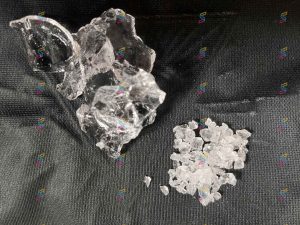Superabsorbent polymers (SAPs) are remarkable materials known for their ability to absorb and retain vast amounts of liquid. Here’s a concise guide to understanding SAPs, their uses, and their impact.

Che cos'è un Polimero superassorbente?
Superabsorbent polymers can absorb and retain large quantities of liquid, swelling to many times their original weight when hydrated.
How Do Polimeri superassorbenti Work?
SAPs function through osmosis, where their hydrophilic polymer chains absorb water, causing the polymer to swell. Cross-links in the polymer structure prevent it from dissolving, allowing for high liquid retention.
Applications of Polimeri superassorbenti
SAPs are used in:
- Personal Care: Diapers, sanitary pads, adult incontinence products.
- Agriculture: Soil conditioners to retain moisture.
- Medical: Wound dressings and surgical pads.
- Industrial: Spill control products.
- Packaging: Absorbent layers in food packaging.
Types of Superabsorbent Polymers
- Polyacrylate-based: Common in personal care items.
- Polysaccharide-based: From natural sources like cellulose.
- Polyvinyl alcohol (PVA)-based: Used in specific industrial uses.
Production of Superabsorbent Polymers
SAPs are synthesized through polymerization of monomers like acrylic acid, forming a cross-linked network.
Impatto ambientale
SAPs raise environmental concerns due to non-biodegradability and potential microplastic pollution. Efforts are ongoing to develop more sustainable variants and effective recycling methods.
Recycling of Superabsorbent Polymers
Recycling SAPs is difficult, but advancements are being made, particularly with natural polymer-based SAPs that may offer better recycling and biodegradability prospects.
Water Absorption Capacity
SAPs can absorb 100 to 1000 times their weight in water, varying with the polymer type.
Safety in Personal Care Products
SAPs used in personal care products are generally safe, meeting rigorous safety standards to avoid skin irritation and health issues.
Benefits in Agriculture
SAPs improve soil moisture retention, reduce irrigation needs, and enhance plant growth, especially in arid regions.
Common Manufacturers
Leading SAP manufacturers include BASF, Evonik Industries, Nippon Shokubai, Sanyo Chemical Industries, and Sumitomo Seika Chemicals.
Challenges in Various Industries
Challenges include high costs, environmental impact, and performance variability across applications.
Impact on Soil and Plant Growth
SAPs enhance soil structure and moisture retention, promoting better plant growth and higher crop yields.
Latest Advancements
Recent innovations include biodegradable SAPs, improved absorption capacities, and smart polymers responsive to environmental changes.
Medical Applications
SAPs are used in medical fields for wound dressings and surgical pads due to their high absorption capacity.
Cost Implications
While SAPs can be expensive, their efficiency and performance benefits often justify the cost.
Comparison to Traditional Materials
SAPs outperform traditional absorbents like cotton and cellulose in absorption capacity and retention, making them ideal for high-performance needs.
Lifespan of SAP Products
The lifespan varies by application; personal care products are single-use, while agricultural SAPs can last from months to years.
Disposal of Superabsorbent Polymers
Proper disposal is crucial. Non-biodegradable SAPs should follow local waste management regulations, while biodegradable options offer more eco-friendly disposal.
Physical and Chemical Properties
SAPs are known for high water absorption, swelling capability, hydrophilic nature, and chemical stability.
In summary, superabsorbent polymers are versatile and highly beneficial across various sectors. Understanding their properties, applications, and environmental impact is essential for maximizing their potential while mitigating their drawbacks.

